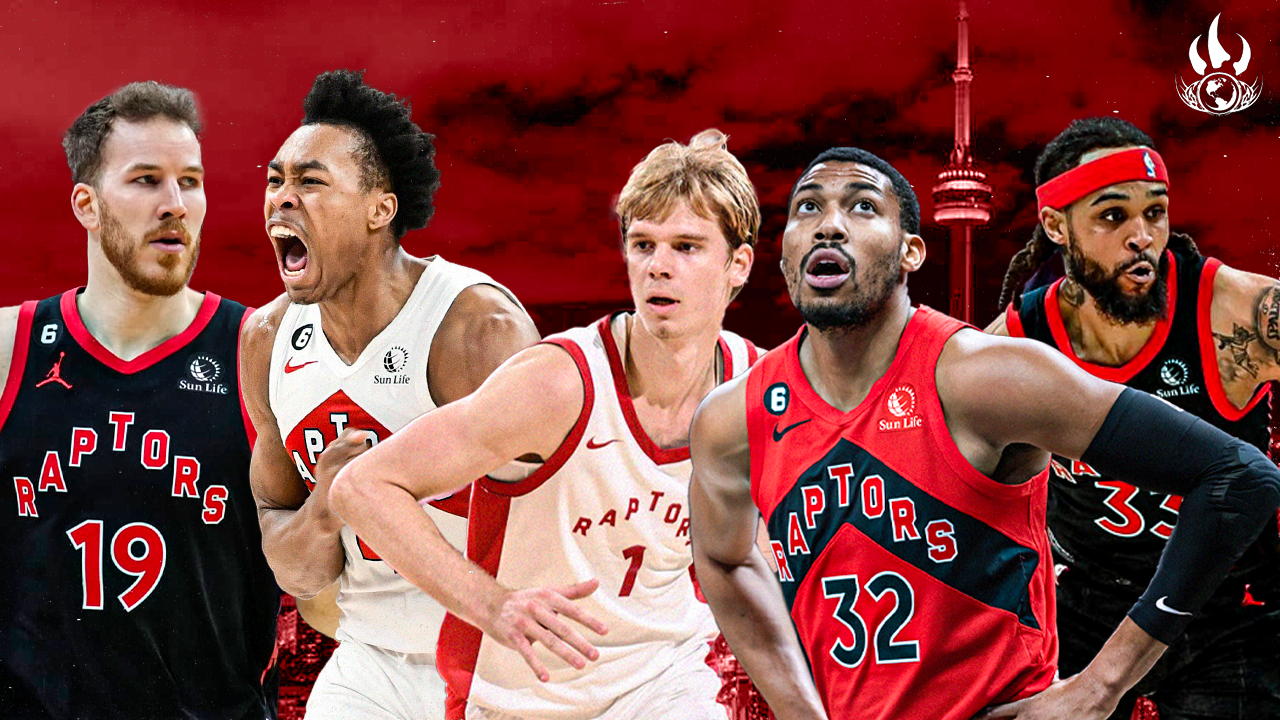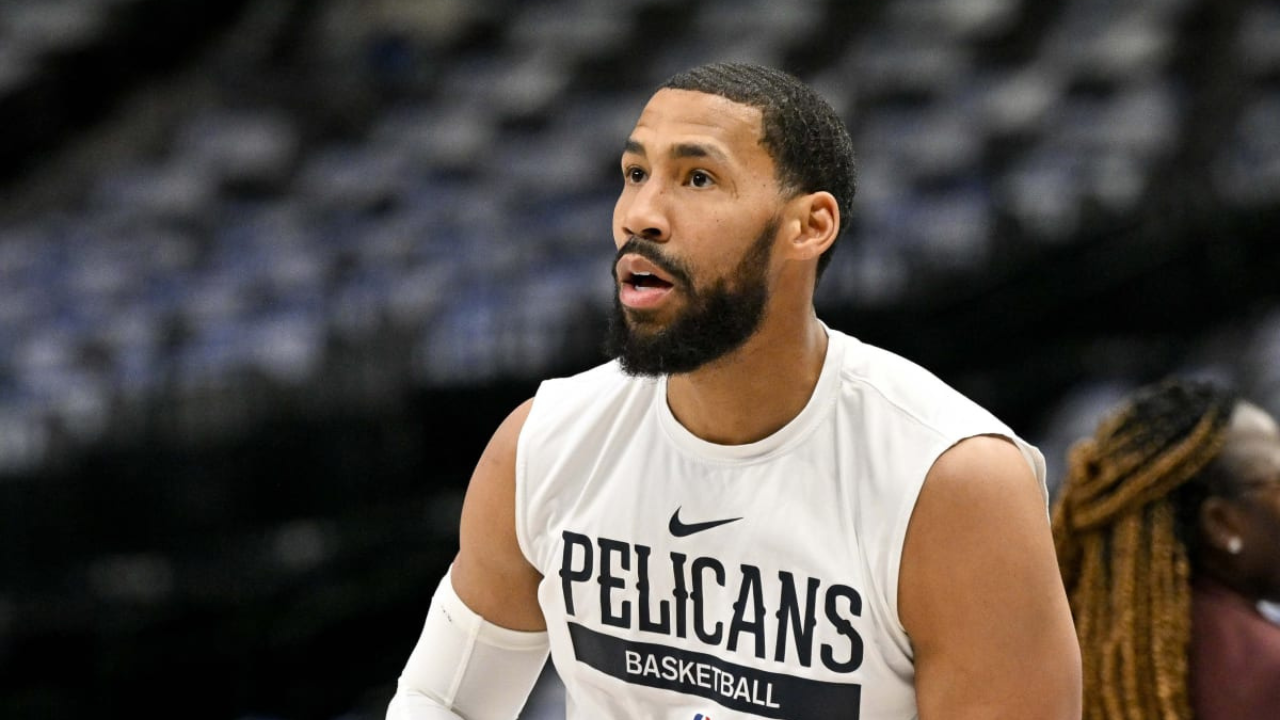If there’s one thing I’ve learned from The Bear, it’s that you can’t have a good beef sandwich without good beef. Well, maybe that’s number 48 on the list of lessons. But the point remains true: Ingredients matter.
And lineups constitute ingredients on the basketball court. A 48-minute game features, give or take, 10 different groupings, each containing exactly five players. Some units play in high-leverage moments, every game. Some play here and there, when games are lulling and fans still on the concourse getting too-expensive pizza. All matter.
I’ve done this exercise several times before. Here’s my argument in the middle of 2021 that two-starter lineups, rather than Lowry-plus-bench groups, would define the team’s success. And here are lineup predictions heading into last season.
This year, some things will be more difficult to predict. There is a new head coach, of course, meaning there will be less certainty in continuity. And Fred VanVleet’s departure means there are approximately 40 minutes a game for which we need to account. As a result, it’s possible some of my suggested lineups might not even see the floor, let alone win their minutes. So there’s more guesswork this time around than ever before. Regardless, let’s dive in.
The Modern: Gary Trent jr. – Gradey Dick – Otto Porter jr. – Scottie Barnes – Jakob Poeltl
This is packing as much shooting and cutting as theoretically possible around Barnes. That’s the best way to build around him, and this group would feature three shooters, all of whom could feasibly shoot 38-to-40 percent from deep next season. On top of that, all three are movement shooters (sorry O.G.) who can jet around a handoff and pull up with little space. There is plenty of cutting, pace, movement, and versatility on the offensive end. Toronto can pack plenty of actions into a 24-second shot clock — as long as someone is able to actually, you know, dribble the ball up the floor.
In the half-court, Barnes would function as the orbital hub, dictating the progression of the play. He’d reject handoffs, pivot into another, run some get action, screen, roll, and altogether make the important decisions. His handoffs with Trent were one of the most efficient two-man pairings in basketball last season, per Second Spectrum. And that would only be a portion of this group’s firepower, with all three cutters capable of hurting the defense by sprinting around Barnes and demanding responses. As a result, Barnes would have lots of opportunities for dump-offs and lay-downs to Poeltl as the shooters draw defensive attention, and Poeltl is Toronto’s most reliable finisher. Barnes would also have as much space as possible to bang in the post, and he would be very active rather than asked to stand in the corner. This wouldn’t just prioritize his contributions to an offense; it would also prioritize his individual scoring.
As for the defense? Well, Porter and Poeltl are proven defenders. Barnes has been great at times. Perhaps this group could survive with rim protection and conservative principles, but ultimately: Who cares? This is modernity, baby.
(A fun variation here would of course be the hypermodern, with Precious Achiuwa in place of Poeltl. Achiuwa and Barnes have spent time as a very successful pairing, and adding Achiuwa as a driver and chaos-creator in short minutes to replace the stability of Poeltl would push Toronto into new, uncharted areas. More handling would be a huge positive. Lots of shooting, lots of weird, and as much cutting as any team outside of Denver, Indiana, or Sacramento can put on the court. This group would be the Jean Baudrillard to Poeltl’s Rene Descartes.)
The Defensive Five: Pascal Siakam – Otto Porter jr. – O.G. Anunoby – Precious Achiuwa – Jakob Poeltl
Theoretically, this group is un-score-on-able. If they started a pickup today, seeing how long it took the other team to get to 15 against them, all five would be late to training camp. There’s vast switchability, with Anunoby, Achiuwa, and Siakam all capable of guarding guards, wings, and forwards comfortably — or initiators or centers in a pinch.
The threesome of Siakam, Aunonoby, Achiuwa played 341 possessions together last season and won them by 15.2 points per 100 possessions. Opponents did not rebound, did not get fouled, and did not make shots. At the same time, Poeltl made practically every group he joined better at defense, with the team’s best defensive on/offs by a wide margin. And Porter is another capable defender who makes few mistakes, rebounds well, and is elite at forcing turnovers. He would also offer crucial spacing on the offensive side — where this group would struggle. They would be miserable in the half-court but would surely get enough stops to eke out points in transition. Siakam can score in a shoebox — certainly more efficiently than virtually any other lineup could score against this fivesome. This group would likely win four-minute stretches by eye-bleeding scores of 4-1 or 5-0.
(A fun — perhaps better — variation here would be with Dennis Schroder in place of Porter. The one weakness of the original five would be corralling shifty initiating guards like Trae Young. Anunoby is very capable there, but it’s the area in which the Raptors least often use him. Perhaps downsizing slightly and asking Schroder to do the job would make the defensive unit more cohesive and more logical, at least against some opponents.)
The Small-Ball: Dennis Schroder – Gary Trent jr. – Scottie Barnes – O.G. Anunoby – Pascal Siakam
One of the biggest reasons Toronto’s small-ball groups failed to win their minutes by wide margins over the past two seasons is because they played so many damn minutes together. Not even the Golden State Warriors like to start Draymond Green at center. The Raptors, on the other hand, played small more than any other team over the course of two seasons; during 2021-22 and 2022-23, the Raptors’ fivesome of Fred VanVleet, Trent, Anunoby, Barnes, and Siakam played 725 minutes, the fifth-most in the league. The next-highest without a center was either Boston at 454 minutes (although Horford is arguably a center), or … the Thunder at 289. The point is that nobody played big minutes without a center outside of Toronto.
When you ask center-less groups to play five minutes game, rather than 20, it’s much, much easier to win your minutes. Yes, Schroder is not the offensive player or shooter than VanVleet is. But he’s the best guard option Toronto’s got.
Toronto’s small groups could, at times, put it all together. They forced turnovers, ran in transition, and created open jumpers. But there were just as many games in which the fivesome looked lethargic on offense, gave up blowbys on defense, and couldn’t handle the defensive glass. It’s hard to always be playing with a size deficit.
Now, Toronto can choose when to play small. Joel Embiid’s on the opposite side? Maybe play big. Mason Plumlee is at center the other way? Yeah, let’s downsize and run. Letting the small unit play 30 games instead of 65 and five minutes a game instead of 10 would be a huge boon. Pick your battles, and you might win them.
The Siakam: Gary Trent jr. – Gradey Dick – Otto Porter jr. – O.G. Anunoby – Pascal Siakam
How can the Raptors make it as easy as possible for Siakam to score? Largely, by giving him as much space as they feasibly can. He would be a point-center for this group, which is very much in his wheelhouse. Whereas Barnes needs as much movement as possible to unlock his passing, Siakam needs as much room as possible to prioritize his shifty scoring.
In many ways, Siakam’s ability to be the best player on the court will determine Toronto’s season. He is Toronto’s best player by such a margin that if the team does want to win as many games as it can — far from a given — prioritizing the ease by which he creates offense is a foundational element. Siakam has never really been able to play alongside four shooters, at least not since he grew into the superstar he is today.
This group would have a modicum of movement, but Dick and Trent would be asked to scamper around the perimeter far less than they would when alongside Barnes on the floor. The fivesomes of Barnes-plus-shooters and Siakam-plus-shooters would look similar in terms of personnel, but their aesthetic differences would be vast. Siakam wants a relatively static court, where he’s able to build an advantage and hammer away at it. Too much movement, and his reads can slow down to the extent he might miss an advantage. But with shooting across the lineup, the other four would simply need to stand still and wait. Siakam would either eat in single coverage or draw a double and find the open man — letting the offense cascade from there.
Siakam received a top-20 rate of double-teams last year. Surround him with shooters, cutters, and finishers, and that’s an offense unto itself. More or less, it’s Toronto’s best shot at half-court consistency.
Having Anunoby on the defensive end will help tremendously — he and Siakam have plenty of experience defending the rim together. They can do it in spurts, although not for long stretches against behemoth centers. Fortunately for Toronto, with centers now on the team, the Raptors only need Siakam-at-center groups to run for spurts. Expect this curveball to be one of Toronto’s best offensive groups.
The Bench Mob: Dennis Schroder – Malachi Flynn – Gradey Dick – Chris Boucher – Christian Koloko
So, let’s be clear: This group is far, far from being guaranteed to win its minutes. If I had to wager, I would bet it will see exactly zero non-garbage time minutes next season. But if the Raptors had to throw a bench mob out there, this would be the group to do it.
Successful bench groups have a good mix of the energy of youth alongside the stability of veterans. Schroder and Boucher have seen plenty and are able to keep the team calm and collected on both ends of the court. They’ve contributed to winning basketball. Flynn is an extra ballhandler and extra initiator — this group would need as much initiation as possible — who would pair with Schroder on the defensive end to be demons at the point of attack. Dick would offer the shooting and off-ball movement necessary to keep the offense dynamic. Koloko would keep the defense tight and together.
Last season, Boucher and Koloko dominated in their minutes together. They actually played a beefy 270 minutes, in which Toronto had a net rating of 19.4. That’s obviously not going to carry over for sure, but it does show a natural companionship between their games in the frontcourt. There’s length (so much!), defense, an ability to play minutes without demanding possessions, and rebounding. This group would lack lots of shooting, struggle on offense in general, and likely have too few advantage-creators on offense. But it could get plenty of stops, get out in transition, and create juicy, momentum-building runs over 90 seconds or less, particularly at home. It probably won’t play, and if it does, it probably would be bad. But there could be great opportunity for fun.
If doing this exercise teaches us anything, it’s that the Raptors don’t really have any lineup that can both play 20 minutes a game and expect to win its minutes. That’s bad. Real bad. The most normal lineup Toronto can field (while maximizing talent) is Schroder-Anunoby-Barnes-Siakam-Poeltl, and I don’t expect that unit to be able to reliably beat opposing starters. It might eke out a positive net rating, but only just; the offense will simply be a struggle. If Trent plays instead of Schroder, which is my expectation for the starting unit to begin the season, Toronto simply doesn’t have a point guard. Those are important!
At the moment, Toronto simply has too many forwards and centers on the roster. It’s likely that one of Boucher, Achiuwa, or Koloko will be out of the rotation. Thad Young is sure to be, and Jalen McDaniels is likely to be. Toronto can build winning lineups, but it’s not easy. That’s what happens when each of Anunoby, Barnes, and Siakam have to play 32-28 minutes, and much of the rest of the team plays the same position as those three.
At the same time, Toronto will depend far too much on some players. It’s almost impossible to build a capable offensive unit without Trent, which is an impressive compliment to how much he’s built his game, but it’s also a testament to how much Toronto is lacking dynamic guards. If there’s one thing that we should take home from trying to smush lineups together, it’s this: Toronto’s roster doesn’t make a whole lot of sense at the moment.



